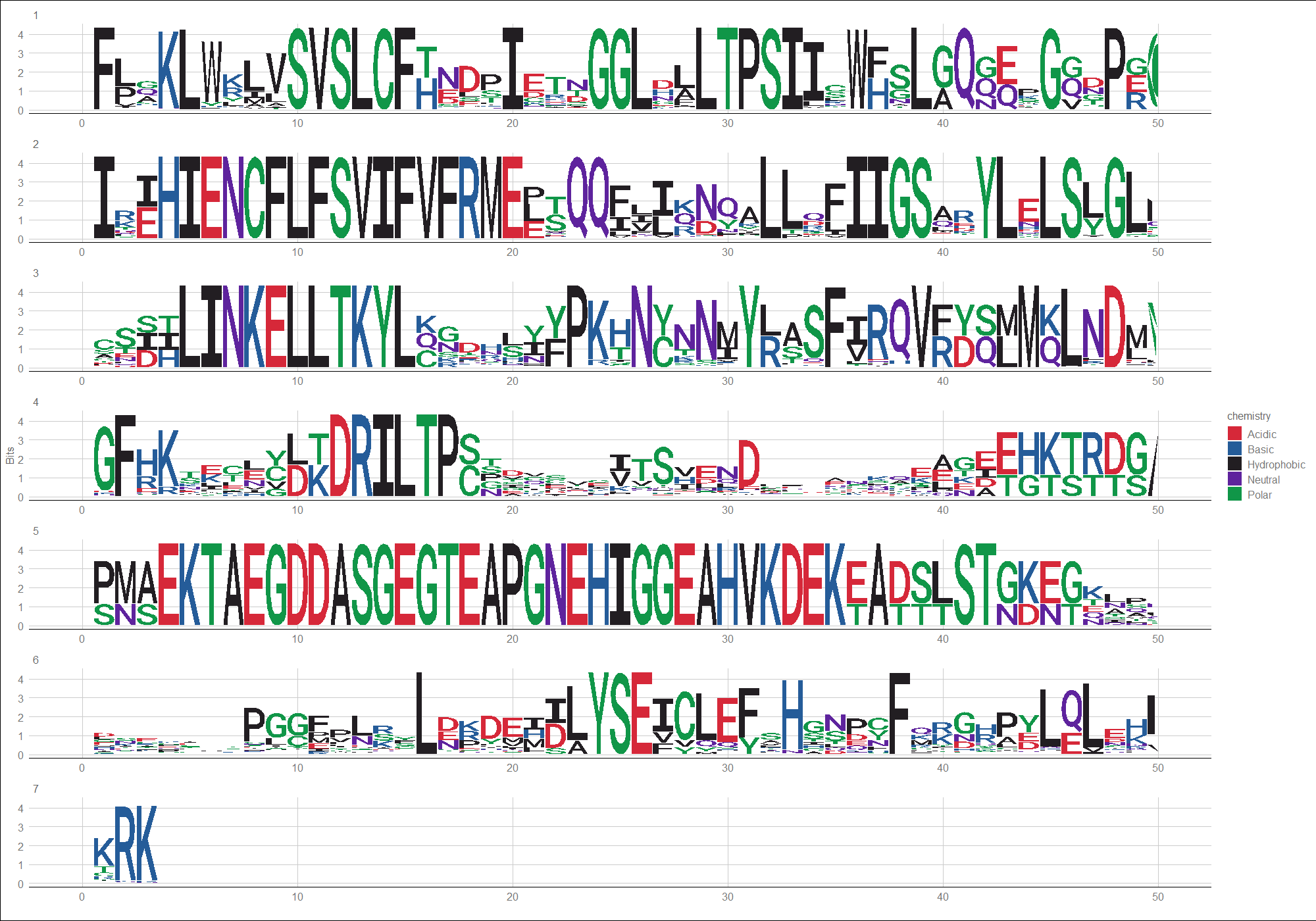HSF
- Domain
- HSF_DNA-bind domain
- Group
- Helix-turn-helix
- PFAM
- PF00447
- Desciption
- Heat shock factor (HSF) is a transcriptional activator of heat shock genes [1, 4]: it binds specifically to heat shock promoter elements, which are palindromic sequences rich with repetitive purine and pyrimidine motifs [1]. Under normal conditions, HSF is a homo-trimeric cytoplasmic protein, but heat shock activation results in relocalisation to the nucleus [2]. Each HSF monomer contains one C-terminal and three N-terminal leucine zipper repeats [3]. Point mutations in these regions result in disruption of cellular localisation, rendering the protein constitutively nuclear [2]. Two sequences flanking the N-terminal zippers fit the consensus of a bi- partite nuclear localisation signal (NLS). Interaction between the N- and C-terminal zippers may result in a structure that masks the NLS sequences: following activation of HSF, these may then be unmasked, resulting in relocalisation of the protein to the nucleus [3]. The DNA-binding component of HSF lies to the N terminus of the first NLS region, and is referred to as the HSF domain.
- Rederence
-
- Molecular cloning and expression of a hexameric Drosophila heat shock factor subject to negative regulation. Clos J, Westwood JT, Becker PB, Wilson S, Lambert K, Wu C. Cell 63, 1085-97, (1990).
- Molecular cloning and expression of a human heat shock factor, HSF1. Rabindran SK, Giorgi G, Clos J, Wu C. Proc. Natl. Acad. Sci. U.S.A. 88, 6906-10, (1991).
- Isolation of a cDNA for HSF2: evidence for two heat shock factor genes in humans. Schuetz TJ, Gallo GJ, Sheldon L, Tempst P, Kingston RE. Proc. Natl. Acad. Sci. U.S.A. 88, 6911-5, (1991).
- A novel mouse HSF3 has the potential to activate nonclassical heat-shock genes during heat shock. Fujimoto M, Hayashida N, Katoh T, Oshima K, Shinkawa T, Prakasam R, Tan K, Inouye S, Takii R, Nakai A. Mol. Biol. Cell 21, 106-16, (2010).
